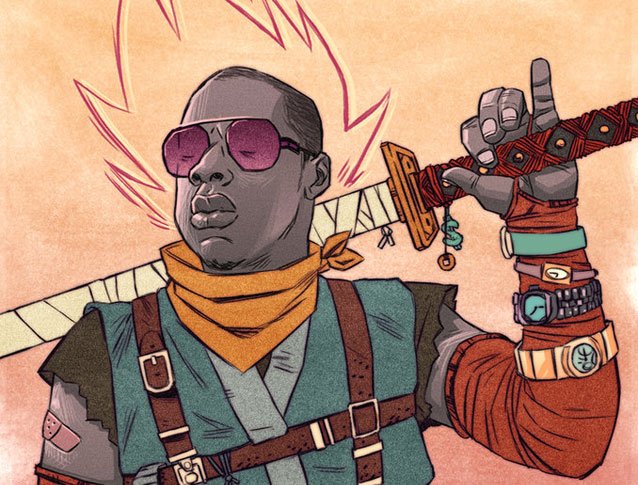

Game Rant’s Robert Keyes reviews Rocksmith
A few years ago music video games were a dominant genre, making big bucks for publishers and hardware manufacturers through rapid launches of sequels, licensed spin-offs, digital music stores and a growing arsenal of higher end peripherals.
With Rocksmith, the first authentic guitar game, Ubisoft aims to take the music video game genre to the next level: realism. Does Rocksmith succeed in bringing the real guitar experience to both beginners and experienced musicians, while still offering fun gameplay? Read our review to find out.
Rocksmith ships with a Real Tone USB cable which lets users plug a real electric guitar into a PS3, Xbox 360 or Windows PC. Players must therefore have an electric guitar – or any guitar with a 6.35mm/1/4″ jack – to play the game or they can purchase the $200 bundle which comes with a Epiphone Les Paul Junior guitar.
Authenticity is the key. Gone are the plastic 5-button toys and in is an actual instrument. Fire up the game, choose which hand to strum the guitar with and begin the Rocksmith journey. No gimmicks. The guitar actually works and picks up on every note and string played, but be warned, it is not capable of correctly registering all guitar techniques, including a few of the ones taught in the game.
The game comes loaded with approximately 50 songs, a variety of old and new and most very recognizable and hand-picked for their guitar focus. From Nirvana and The Rolling Stones to The Black Keys and Stone Temple Pilots, there should be a few hits for any aspiring guitarist. Additional songs are and will continue to be available through the in-game store as DLC.
Rocksmith is primarily a single-player game and is not a substitute for the party game appeal that Rock Band offers. It does support a two-player mode if you have a second Real Tone USB Cable and guitar or a microphone. The basic gameplay is not unlike other music games with the guitar neck laid out on screen with notes and chords popping up in succession. For guitarists familiar with traditional tablature, there’s an option to invert the standard display.
The game’s campaign is structured into a career of sorts, the Journey as it’s called in game, and the experience is meant to simulate that of an amateur guitarist on the small venue circuit, performing small sets until moving onto another. Songs can be rehearsed and replayed until hitting a certain point score recommended before the player is event-ready, at least according to what the game believes is “event ready.” Between performances, while progressing down the journey/timeline, Rocksmith also makes recommendations to help players improve from their current level of expertise. These includes skill challenges and mini-games.
The mini-games in the Guitarcade are very fun but must be unlocked as the player progresses – each has a specific function in teaching a different technique, from learning the frets and strings with ‘Ducks’ and ‘Super Ducks’ to learning chords with ‘Dawn of the Chordead.’ This is really the only time where Rocksmith feels like a traditional video game since the game does away with things like the colorful character avatars of Guitar Hero – all performances are played from a first-person perspective so the player will never see him or herself or the band on stage. The game’s different venues are superfluous and the odd looking crowd never changes, nor does the gameplay between rehearsing and performing at an “event.”
The Rocksmith Journey
As for the technique challenges, there are many of them, each teaching a very specific guitar lesson. With these, Rocksmith begins to shine as a learning tool but the tutorial videos do not always fully explain for beginners what needs to be done and this is especially troublesome for some of the techniques – like the palm mute – where the game is unable to register the action. To proceed in these events, we needed to do the opposite of what it was instructing us to do.
While performing a song, the game is designed to automatically adjust the amount of notes, combos or chords on screen depending on how the player performs, even in techniques if said chord hasn’t been demonstrated to the player. If the user is experienced, they can play away and the game will increase the difficulty and add more notes, accordingly.
The adaptive A.I. is an interesting feature and works well at recognizing how the player is performing. In theory, this game design choice is genius and it follows the mindset that players don’t know how good they are at a song when picking it up, so the game helps determine that for them as they play along. It does not however, actually help the player learn the song or chords in segments or as a whole and this is the a part of the game’s major issue: restrictions.
The AI feature cannot be altered and there exists no option for players to select and stick with a difficulty level before beginning a song should they choose to do so. You get what you’re given based on what you do on the fly and this hinders experienced players who want to play a song proper from the beginning and all the way through, while at the same time making it too difficult for beginners trying to learn in stages.
Rocksmith mini-games
As a learning tool, the game both in song and in the technique challenges, is over-rewarding and because of that, beginners will be praised and given an increased challenge when they are not ready. Even if doing a technique challenge and hitting every note incorrectly, the game will push them through to the challenge after the brief tutorial. Rocksmith is good about getting players playing right off the bat, but there needs to be the option for users to focus on learning as well.
Rocksmith rewards repetition over skill development and doesn’t offer enough in terms of detailed and informative (read: complete) tutorials to help beginners, even though the game is clearly designed with the inexperienced in mind. Players can earn a gold rating on a specific technique by repeatedly finishing it with only mild success, rather than needing to have accomplished it at a higher difficulty.
Rocksmith includes features that help the player tune the guitar and learn the basics of guitar playing, but it does not teach them how to tune a guitar themselves or how to play all of the chords. For experienced players, jumping into the song selector and choosing to play with chords is great fun, and with Rocksmith’s amp feature, different pedals and effects can be added when unlocked and played with freely in Amp Mode.
Rocksmith plays as a very cool, high potential tech demo but as a complete game with lasting appeal or as a comprehensive learning tool, it does not fully succeed. For the most part, Rocksmith works well and it does offer the next evolution in music gaming – it just is lacking in a few basic features, further hampered by slow and restrictive menus that frequently require loading and saving screens while navigating. Due to the nature of Rocksmith being an authentic musical experience, it’s not a pick-up-and-play game. A high willingness to play and a long-term time investment is required to fully take advantage of the game’s features, just like learning any instrument.
The standard $80 package, which includes the USB cable, and the $200 bundle which comes packed with a legit electric guitar are great deals. For players who have put in time with Rock Band and Guitar Hero, especially those who made use of the Pro Guitar, Rocksmith is something that needs to be played, even if to simply prepare for Rocksmith 2 which we hope expands and fleshes out all of the features.
–
Follow me on Twitter @rob_keyes.
Rocksmith is currently available for the PS3 and Xbox 360.




 Final Fantasy XIII-2 Walkthrough: Fragment & Artefact Locations (Part Two)
Final Fantasy XIII-2 Walkthrough: Fragment & Artefact Locations (Part Two) Review: Chrono Jigga, A Jay-Z/Chrono Trigger Mash-Up By 2 Mello
Review: Chrono Jigga, A Jay-Z/Chrono Trigger Mash-Up By 2 Mello Top 5 Legend of Zelda Games: #2
Top 5 Legend of Zelda Games: #2 Xbox One Wallpapers in HD
Xbox One Wallpapers in HD The Walking Dead: Season Two Episode 1 - All That Remains Review
The Walking Dead: Season Two Episode 1 - All That Remains Review